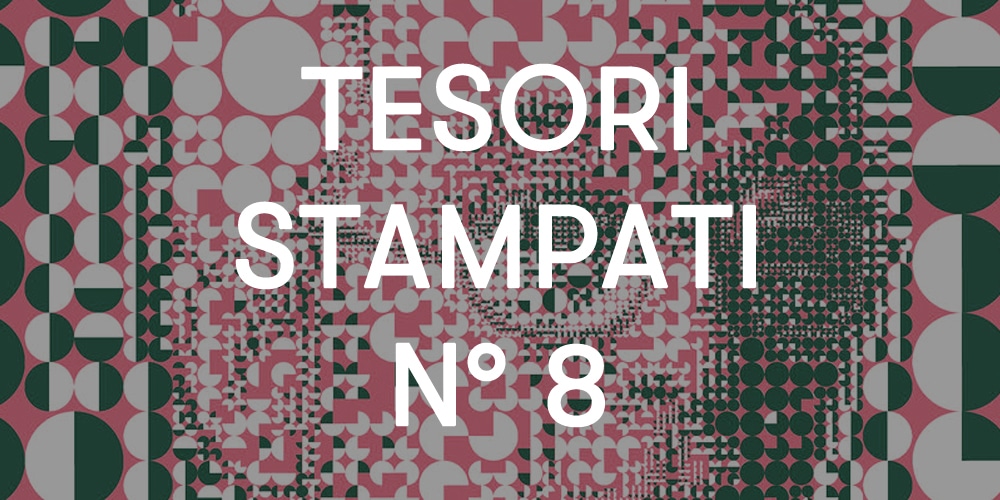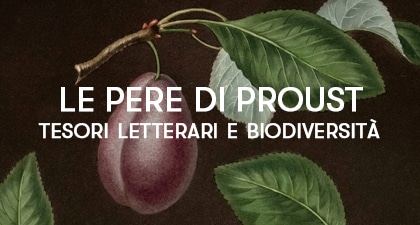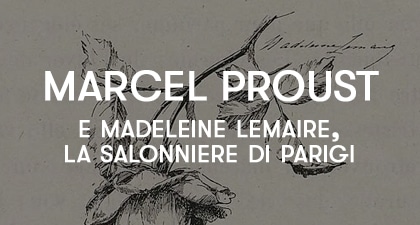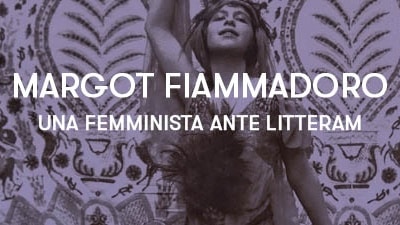
A lovely booklet that has entered our catalog, published by Melangolo in 1992 (Bruno Munari – Written Report), has brought our attention back to one of the most brilliant and eclectic protagonists of 20th-century Italian culture.

“Everyone knows a different Munari,” so concludes his famous autobiography: I didn’t know Munari the “poet,” but here he is, in this delightful collection of aphorisms, poems, and rhymes that tell us about him and his way of looking at the world and art.

One is tempted to quote dozens of these short compositions. However, I prefer to focus on two characteristics of the man/artist Munari that always fascinate me: on one hand, his being a child of an era when it was believed possible to change the world, and where the artist played a key role in this “Revolution” that “must be done / without anyone noticing.”
A poem from our little book aptly describes this ethical and civic vision of art:
LIVE ART
The great painter
paints the sign for the baker
the great sculptor
shapes a machine
the great architect
designs the house
for the head of government
the great poet
writes popular songs
the great musician
composes the music
for the poet’s songs
a civilized people
live
amidst their art
And alongside this commitment, the unparalleled lightness that characterizes every work of this artist.
As Dino Buzzati rightly said of him in 1955: “No one, after a certain age, retains the wonderful imaginative capacities of childhood. No one except Munari.”
In a piece entitled “When Childhood Ends,” Munari describes the enchanted state of our being children:
“During childhood, we are in a state that the Orientals define as Zen: the knowledge of the reality surrounding us occurs instinctively through that activity adults call play. All sensory receptors are open: looking, touching, tasting, feeling warmth and cold, weight and lightness, softness and hardness, roughness and smoothness, colors, shapes, distances, light and dark, sound and silence…”. Then as adults, “we learn almost nothing new, we only use reason and words,” and “we have a beautiful villa built by the lake, and as a memento of a happy childhood lost forever, we put in the garden the complete series of cement gnomes and Snow White.”
Munari, however, managed to stay connected to the inner child we all carry within ourselves, and this is why he was so adept at speaking to children.
His illustrated books educate children to perceive the world through play, fostering a new way of seeing things, capable of appreciating beauty, so that as adults they can build a better world.
In our catalog, we have some beautiful first editions: the poetic book for the youngest readers, Roses in the Salad, entirely illustrated with colorful stamps made from lettuce stalks (“Have you ever seen roses in lettuce? I have… When mom cleans the lettuce, she cuts the leaves near the stem and throws away this stump with the leaf attachments. That’s where the roses hide”).

The ingenious In the Fog of Milan, composed of colored, die-cut, and illustrated pages with translucent overlays that reproduce the mysterious effect of Milan’s fog.

The amusing Where Are We Going?, where Munari hides behind the pseudonym E.Poi.

And finally, Let’s Look Into Each Other’s Eyes: 25 loose cards of different colors, each with a different stylized face, featuring holes for the eyes and mouth. The “instructions for use” provided are more than a mere explanation of how the book-game works; they offer a way of interpreting the world as it should be, entrusted to children with the hope they will understand.




“All these sheets can be shuffled, erasing the order the author assigned. They can be grouped into small sets, thereby changing the eye color of almost every design. Just as in reality, all those with the same visual aperture and view the world in the same way, have no different observations to share. Only those with a different visual aperture see the world differently and can provide others with information that broadens their perspective. So mix the drawings, change the eye colors, let’s get used to looking at the world through others’ eyes…”








